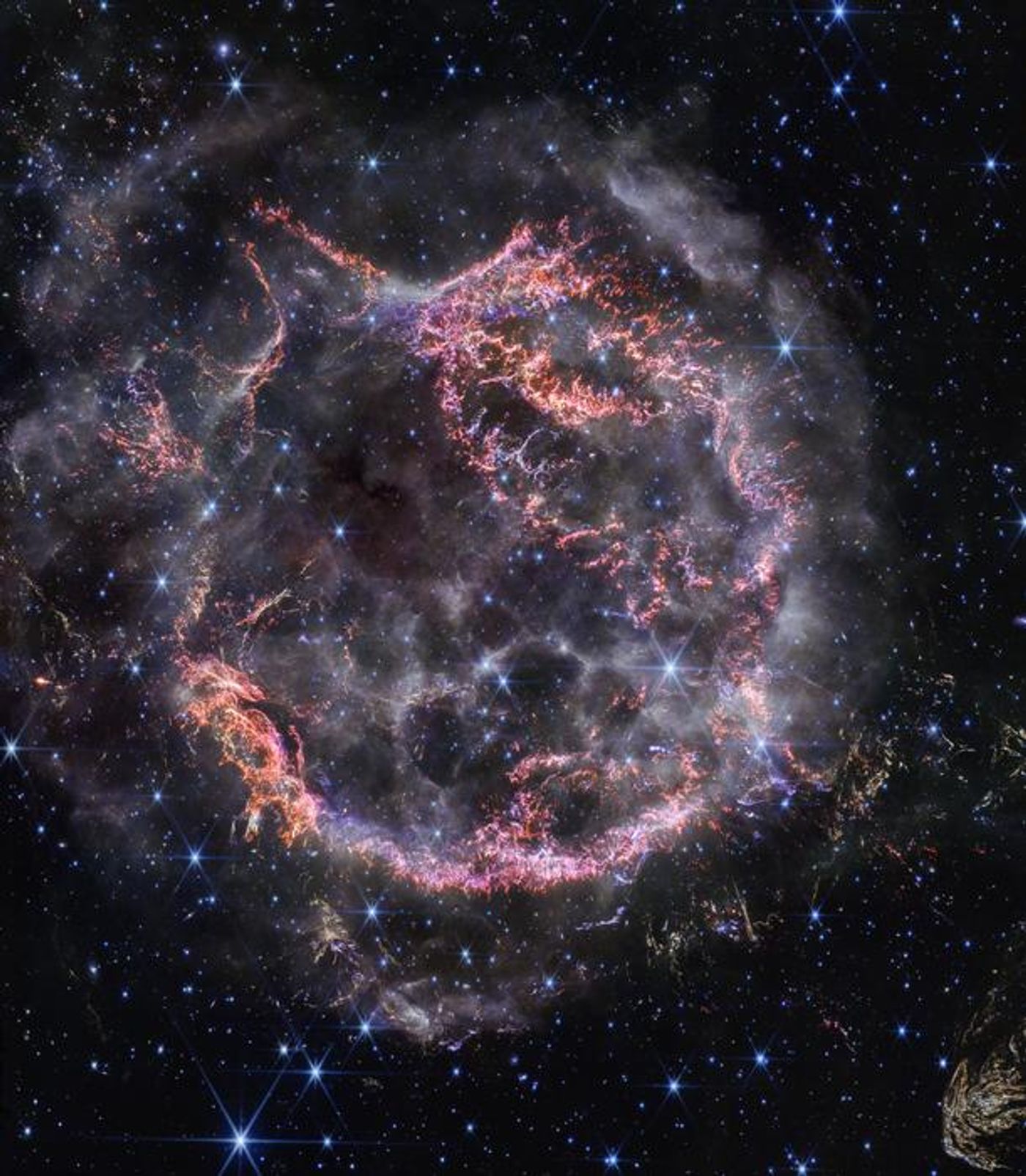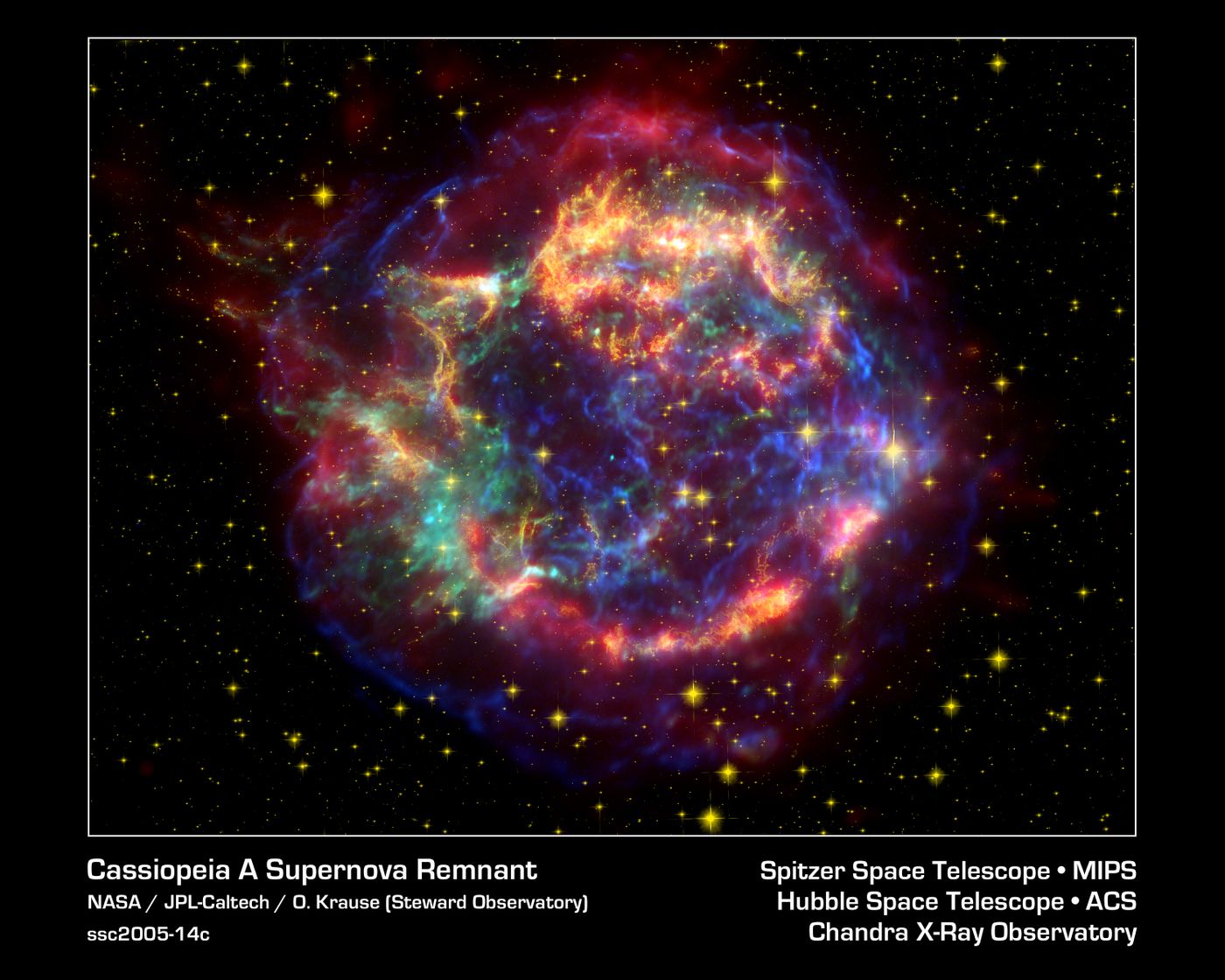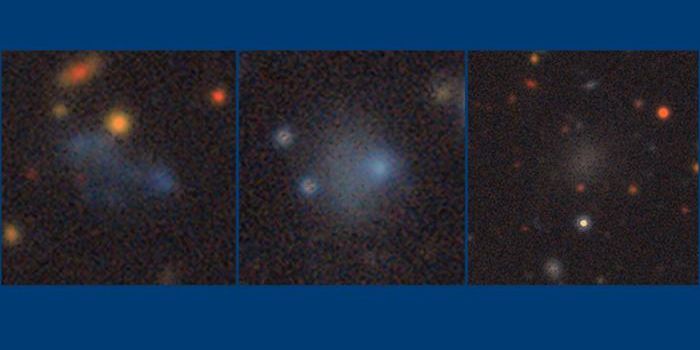Webb's Wonders: A New Holiday Image of Supernova Remnant Cassiopeia A
Just in time for the holidays, NASA’s James Webb Space Telescope (JWST) recently used its Near-Infrared (NIRCam) instrument to capture stunning images of the massive supernova remnant, Cassiopeia A (Cas A), comes after JWST used its Mid-Infrared Instrument (MIRI) to capture its own images of Cas A earlier this year. Along with being comprised of different colors, each image provides different details of Cas A, with some features being visible in one image that aren’t visible in the other image. In either case, this most recent NIRCam image continues to offer stunning insights into one of the most well-known supernova remnants that spans 10 light-years in diameter and located approximately 11,000 light-years from Earth.
Recent image of the supernova remnant, Cassiopeia A (Cas A), taken by NASA's James Webb Space Telescope, revealing details like never before. (Credit: NASA, ESA, CSA, STScI, D. Milisavljevic (Purdue University), T. Temim (Princeton University), I. De Looze (University of Gent))
“With NIRCam’s resolution, we can now see how the dying star absolutely shattered when it exploded, leaving filaments akin to tiny shards of glass behind,” said Dr. Danny Milisavljevic, who is an Associate Professor of Physics and Astronomy ay Purdue University and is the research team lead. “It’s really unbelievable after all these years studying Cas A to now resolve those details, which are providing us with transformational insight into how this star exploded.”
Cas A has previously been investigated using NASA’s Hubble Space Telescope, Chandra X-Ray Observatory, and the now-retired Spitzer Space Telescope, which all revealed stunning details about Cas A. However, NIRCam is so powerful that it was able to identify details about the now-deceased star, including neon, argon, oxygen, and sulfur.
2005 image of Cassiopeia A using combined data from NASA’s Hubble Space Telescope, Chandra X-Ray Observatory, and the now-retired Spitzer Space Telescope. (Credit: NASA/JPL-Caltech/O. Krause (Steward Observatory))
2014 video describing how Cassiopeia A was observed using 3D methods.
Given that Cas A is estimated to have gone supernova approximately 340 years ago, this makes it a relatively young supernova remnant and a prime target of interest for astronomers hoping to investigate events so soon after a star’s explosion. Studying supernova remnants allows astronomers to investigate not only how stars die but also how their expelled material could form new solar systems millions of years from now.
What new discoveries will astronomers make about Cas A in the coming years and decades? Only time will tell, and this is why we science!
As always, keep doing science & keep looking up!
Sources: EurekAlert!, Wikipedia, Space Telescope Science Institute, NASA, NASA JPL, SAGE Publications










